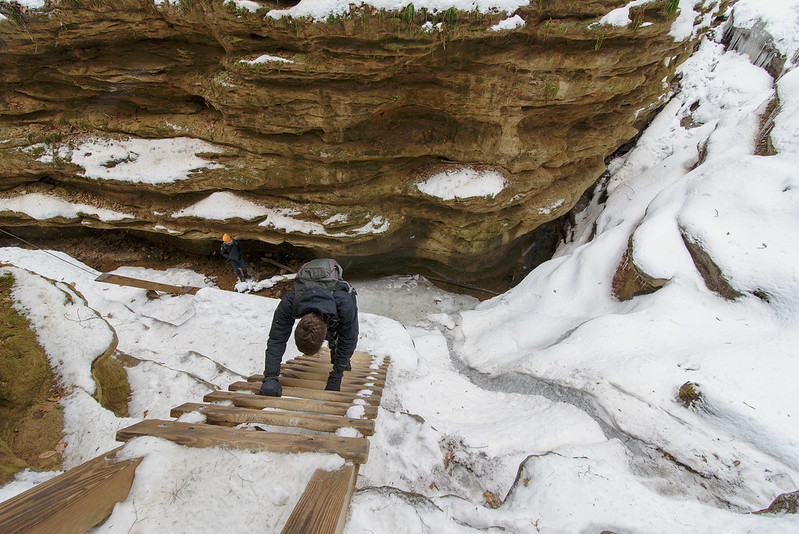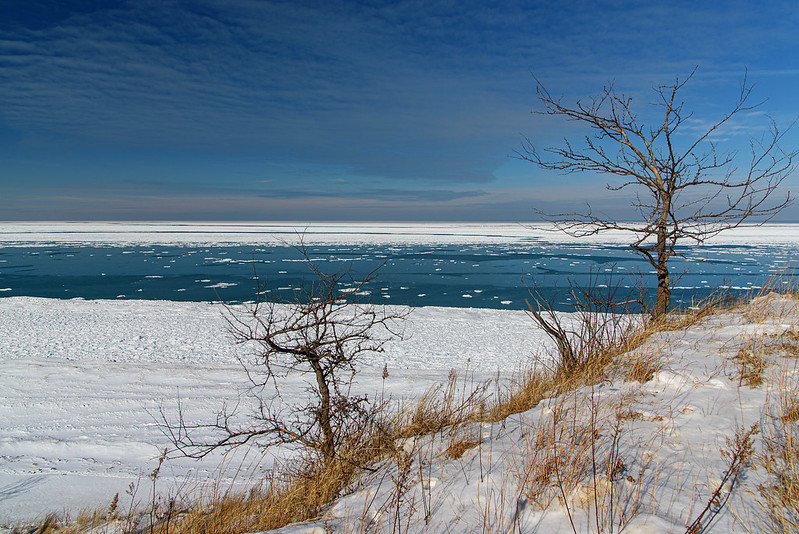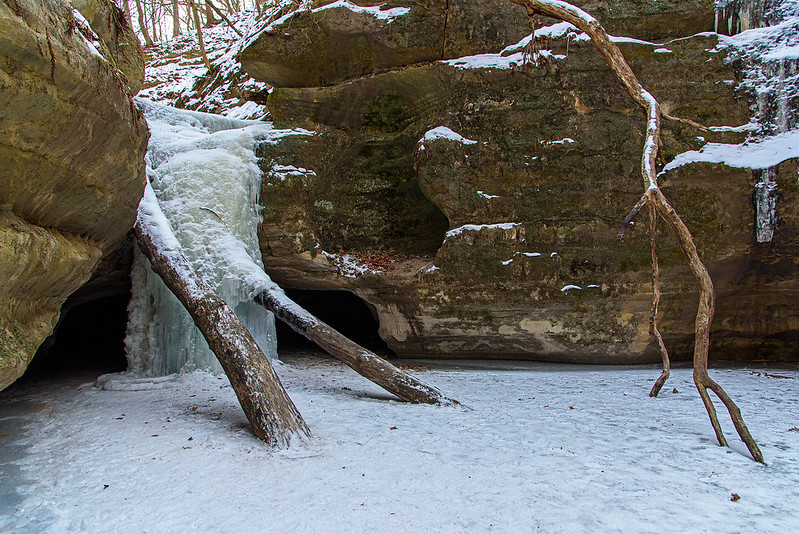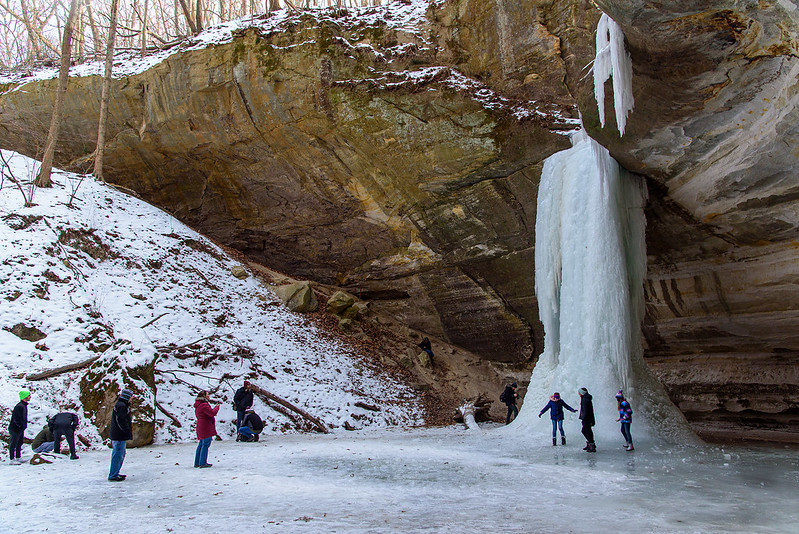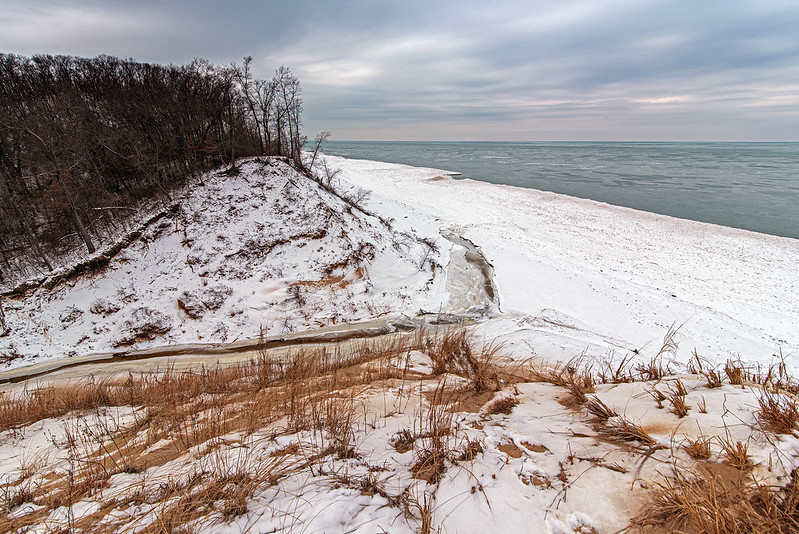
It seems every year there is at least one warm up in February, this year there were a couple of days near 50 degrees, but once March arrived, we had our first 70 degree day of the year. Hiking along the dune ridges on this warm day sure felt summer-like (I can't wait). I think even the trees thought it was summer, judging by the deep green color of the coniferous trees.
It doesn't take much rain or warm weather to get them to green up, especially in this environment.
The sand seems to keep in the heat - I may be imagining this - but the vegetation here at the Indiana Dunes National Park responds just a bit different than those a few miles away. I would think the environment here is quite harsh in comparison; sand drains well, so moisture doesn't remain in the ground too long, the sand gets very hot, it doesn't have a lot of nutrients to sustain plants. This must by why the native species do so well here, while some other invasives don't - at least on these dunes. In addition to the plant life, some wildlife thrives in these areas and practically nowhere else in the area.
A very small amount of snow is left over from the last winter storm, only in the shady spots and probably where the snow drifted into deeper piles. The snow looks more like a white cloth left on the ground - like the old television shows and movies where they simply piled some cotton cloth in the corners to represent snow.
Of course, two days after the summer weather, it snowed a bit. The best thing about spring snow is the fact that it doesn't last more than a day or two!
This area may not look expansive, but when you hike it, you would realize just how far it is from the place I'm standing to the distant trees. We didn't run into too many people so scale is difficult to represent in photos.














